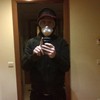Ukrainian volunteer fighters take position at a checkpoint in Kyiv. Photo: FADEL SENNA / AFP
Russian forces would suffer extremely heavy losses if they ever entered Kyiv, which could become a "wood chipper" for enemy troops, an urban-warfare expert says, as columns of troops stall on the edge of the city and resort to long-range shelling causing civilian deaths.The forecast comes as Western intelligence estimates that Russia is losing up to 1,000 troops per day and Ukrainian and Russian forces engage in bloody street-to-street fighting in Mariupol, a besieged port city in the south of Ukraine that’s been encircled and bombarded by Russian forces.Retired U.S. Army Maj. John Spencer says urban areas allow forces that appear weaker the chance to counter their opponents’ perceived superiority. “Defence is always stronger, but the strongest form of defence is urban, because the urban [environment] gives you ready-made fortifications.”Spencer, chair of Urban Warfare Studies at the Madison Policy Forum, has been watching videos of Ukrainian civilians attacking Russian forces with concern.“Like, holy crap... I'm watching things and like, OK, look stop, don't throw a Molotov cocktail at the side of a tank; it won't do anything,” he tells VICE World News. “If you're going to do that, try to get it on top of it.”Spencer started publishing a series of simple diagrams on social media, offering advice to 100,000 civilians who have joined Ukraine’s Territorial Defence Forces. He has published advice on how to prepare an ambush, what kind of weapons and supplies you need, where a sniper should position themselves and how to use underground spaces. He uses Google to translate his messages into Ukrainian.A photograph of armed Ukrainians studying printouts of the diagrams - which Spencer says made him feel “humbled and extremely proud” - went viral, receiving over 10,000 likes on Twitter. Spencer has now compiled his advice into a “Mini Manual for the Urban Defender,” which he has published on his website.“We know this in history: You put your headquarters underground, it can't be hit,” says Spencer.“There's basically a city underneath that city that would be extremely important in defending it. Number one, it gives you what you need to protect… not only your people [but also] your fighting capability.”These can be used for both defence and attack, Spencer says. “You can rapidly move forces through the underground, fully protected, to surge on places that you think that the enemy is trying to come in.”“Stalingrad was called the ‘rat war’ because I could pop up, attack you because you're on the surface, pop back down in my hole, come up behind you. It gives you that capability.”Recent developments hint that the battle for Kyiv city is looming and remains a key Russian objective.Spencer says that urban warfare is the present and future of war. “Nobody has the size [of army] to fight battles like in World War II - large fronts of forces meeting each other in the field of battle. The fact that militaries are smaller drives more combat into urban areas.”While around a million of Kyiv’s 2.8 million residents have fled, many have stayed behind to fight. The Ukrainian government has called upon civilians to “resist” the invaders with Molotov cocktails and has given out weapons to whoever wants them.Spencer spent 25 years in the army and was deployed into combat twice in Iraq, first in 2003 during the initial invasion and then again in 2008 taking part in the notorious Battle for Sadr City. He went on to help the U.S. Army brainstorm conducting a military operation in a hypothetical mega-city. He then helped to set up the Modern Warfare Institute at the West Point US military academy, where he focussed on urban warfare. In such a conducive environment for successful defence, an assault on the Ukrainian capital could be extremely bloody for the Russian army. With the trap set, “You just want them to feed themselves into the wood chipper”, says Spencer.Despite this, Spencer believes taking Kyiv remains a goal for Putin. “War is the politics by other measures. That city is so important at this moment because the only goal of the Russian army is [President Volodymyr] Zelenskyy and his government, who are based in Kyiv”, said Spencer.“Now, it's even more critical because Russians were so inept, that they gave Ukrainians more and more time to prepare and protect Zelenskyy and the government inside that city.”
Advertisement
Advertisement
Spencer has advised Ukrainian defenders making sandbag emplacements that anything concrete is better. Even the rubble from destroyed buildings creates a great barrier. “Rubble is also a very effective obstacle for not only armour formations but even light formations”, said Spencer.
There are more opportunities for defenders to use the environment to their advantage. “Number one is: You just keep building. I mean turn this into basically ‘Home Alone’ at the large-scale street level,” said Spencer.“Barricade your doors. You can barricade your stairwells. You can put holes in walls. We call them mouse holes, which allow you to escape through walls.”
Another tactic that Spencer recommended was to use snipers to make life hell for dismounted infantry. “There's very little that can be done if a sniper is somewhere and you don't know where it's coming from. It's terrifying even to the most trained soldiers. You don't have to be a sniper. You just have to be firing from somewhere inside of a room.”
One advantage that Kyiv has for the defenders is its vast array of underground tunnels. The city has many kilometres of tunnels, including underground rivers and a Cold War–era bunker built to protect 600 people from a nuclear blast.
Advertisement
Advertisement
